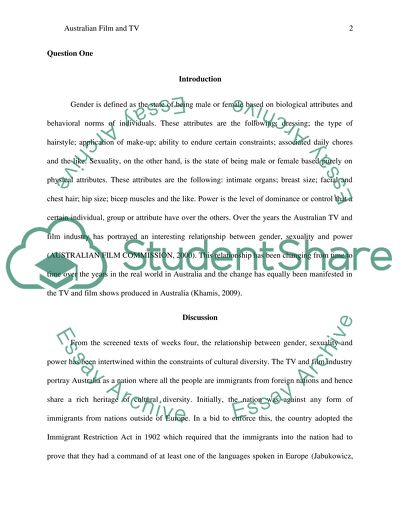Cite this document
(“Gender, Sexuality, And Power In The Australian TV And Film Essay”, n.d.)
Gender, Sexuality, And Power In The Australian TV And Film Essay. Retrieved from https://studentshare.org/visual-arts-film-studies/1479894-gender-sexuality-and-power-in-the-australian-tv-and-film
Gender, Sexuality, And Power In The Australian TV And Film Essay. Retrieved from https://studentshare.org/visual-arts-film-studies/1479894-gender-sexuality-and-power-in-the-australian-tv-and-film
(Gender, Sexuality, And Power In The Australian TV And Film Essay)
Gender, Sexuality, And Power In The Australian TV And Film Essay. https://studentshare.org/visual-arts-film-studies/1479894-gender-sexuality-and-power-in-the-australian-tv-and-film.
Gender, Sexuality, And Power In The Australian TV And Film Essay. https://studentshare.org/visual-arts-film-studies/1479894-gender-sexuality-and-power-in-the-australian-tv-and-film.
“Gender, Sexuality, And Power In The Australian TV And Film Essay”, n.d. https://studentshare.org/visual-arts-film-studies/1479894-gender-sexuality-and-power-in-the-australian-tv-and-film.


